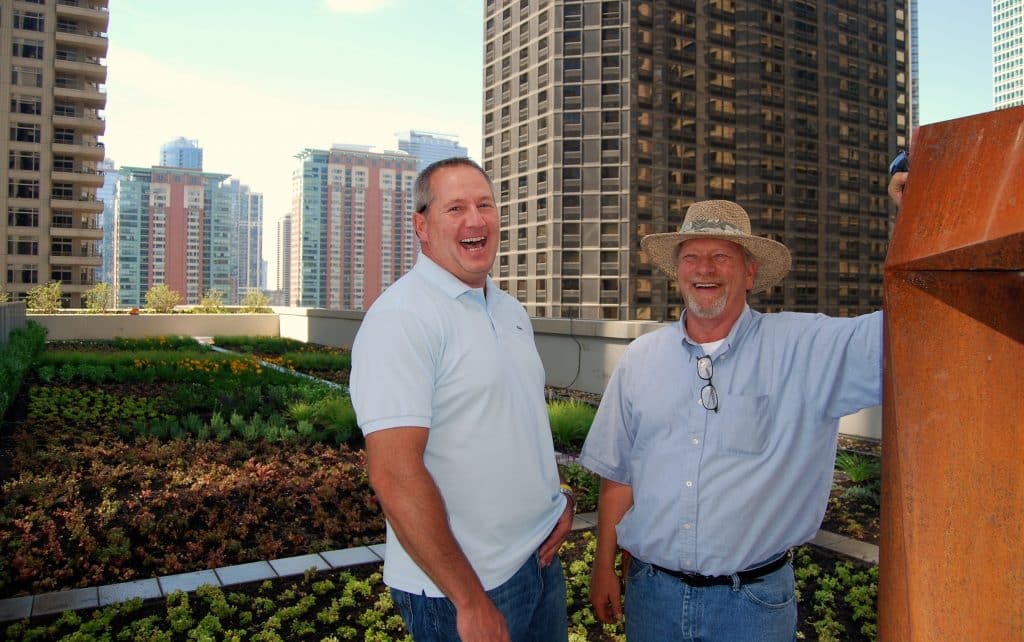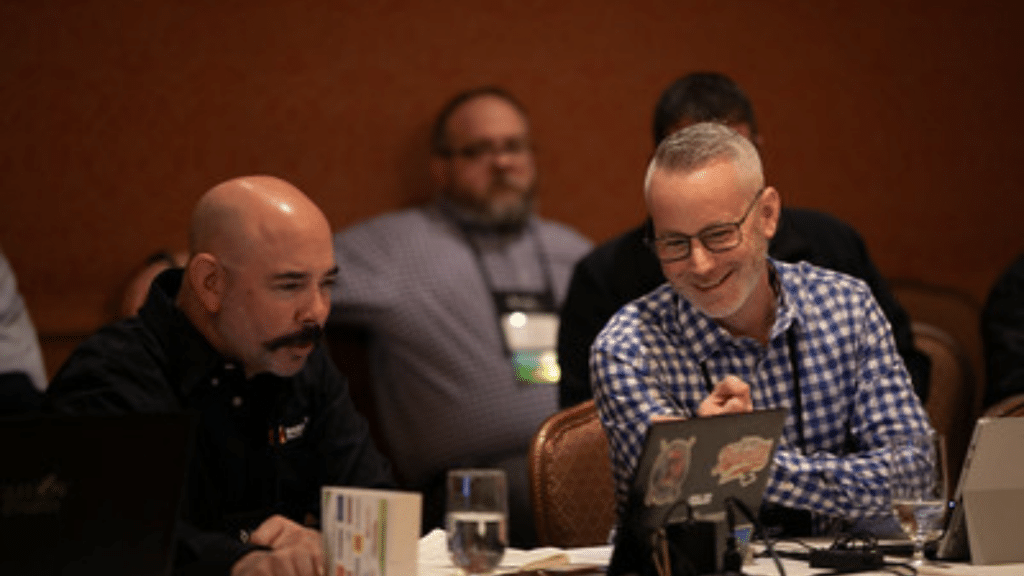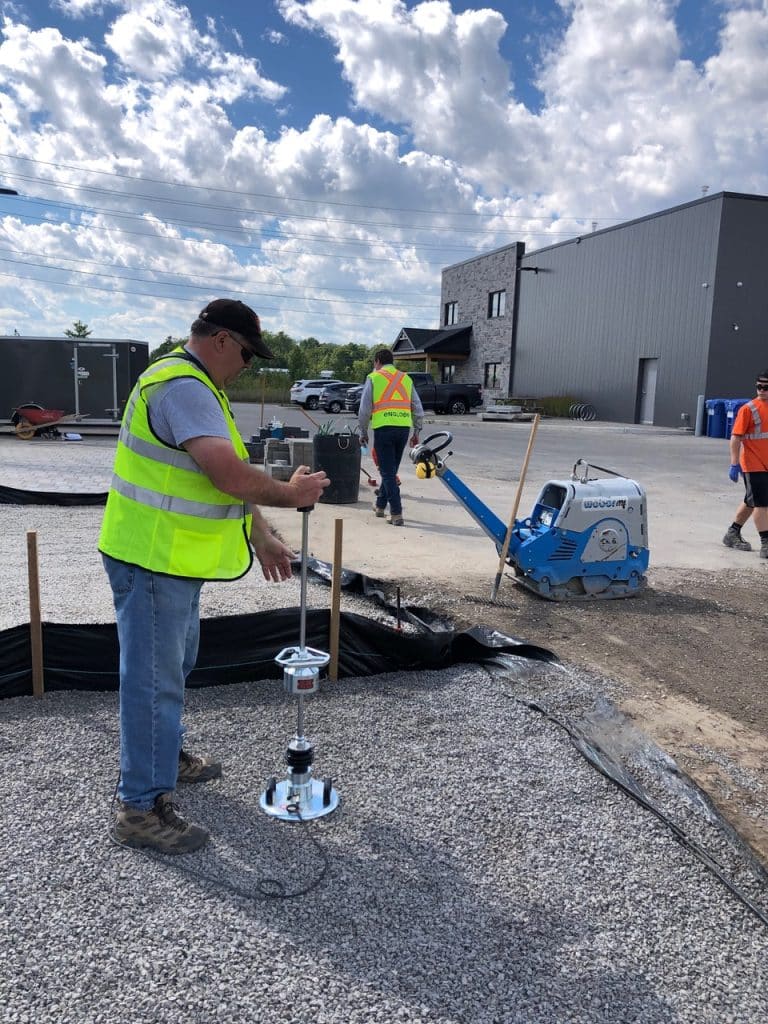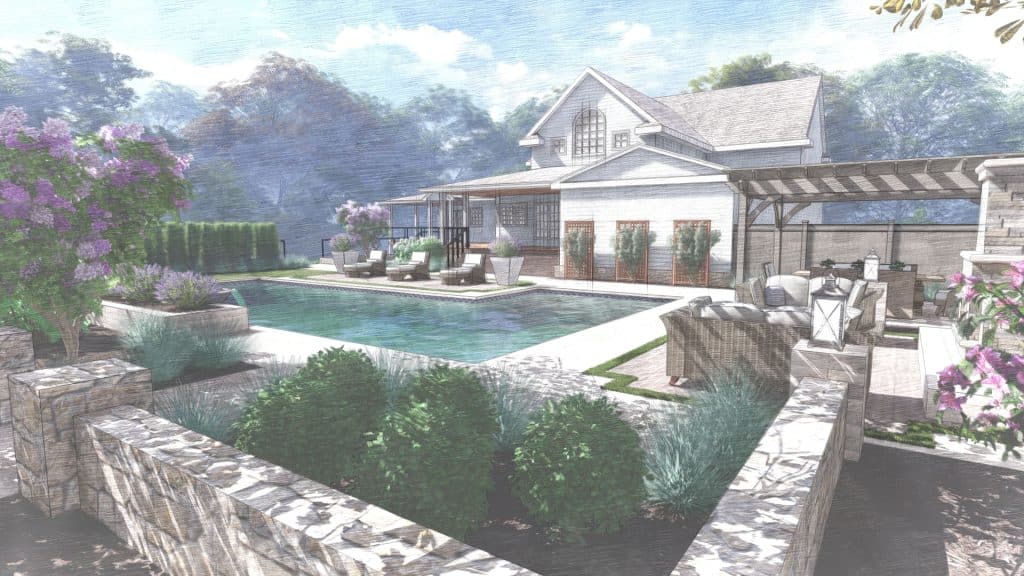When John Algozzini started his career at a bank fresh out of college, landscape design wasn’t even on his radar. But he quickly learned banking wasn’t the right path for him.
“I was intellectually confined, emotionally confined and I thought, ‘There has to be something better,’” he said.
That “something better” turned out to be a weekend job at a garden center he passed every day on his commute.
He kept both jobs for a while, but ultimately something had to give. Algozzini came home one day and told his wife he’d quit his job. She was relieved, thinking he meant the weekend gig.
“I said, ‘Oh. That’s not the job I quit,” Algozzini remembered with a laugh.
Finding His Path Through Persistence
After discovering his passion, Algozzini still had to find his path to break in.
For several years, he was working three jobs to make ends meet. He worked full-time at a landscape company, waited tables at night, and pumped gas at a full-service station on weekends.
“I was determined,” he said.
Despite having no formal training in landscape design, Algozzini threw himself into learning. He read voraciously, covering everything from design books to volumes about landscape architecture and great gardens.
This was also the mid-1980s, so he wrote letters—actual letters—to every expert in the country he could find. About half responded, including memorable exchanges with Dr. Mike Dirr, a well-known horticulturist.
“I’ve found people in this industry to be generous and I’ve always tried to be the same,” Algozzini said. “You may have a lot of competitors, but they’re also colleagues.”
Algozzini also credits working for back-to-back award-winning firms as the stroke of luck that continued to fuel his motivation and passion for the field. He eventually transitioned into a design sales role where he spent the next 38 years.
His Philosophy for Great Design
Looking back, Algozzini can see that landscape design may not have been as unexpected of a career path as he originally thought. Some of his earliest memories are of planting marigolds and zinnias with his grandmother. He also spent a lot of time with his mother and maternal aunt, who were both artists.
“I think on a human level those were probably factors for me,” he said, though he is quick to point out that he did not inherit his mother’s talent for drawing or painting.
Algozzini’s design style is guided by three key principles.
“The client is always the primary driver, followed by the architecture of the building or the home and the space at hand,” he said. “…You have to be able to feel that space. I believe that in my heart and that’s what I try to do. Feel a space when I go out there to do a site inventory and do a walk around.”
While the architecture and space might flip-flop in priority depending on the project, keeping these three elements in mind allows him to develop solutions. Algozzini ultimately sees design as an exercise in problem-solving.
“I think that’s the beauty of it,” he said. “There are an infinite number of possibilities to be creatively successful.”
In his career, Algozzini has had the opportunity to work on a lot of special projects. He worked on the house where Home Alone was filmed and on several projects that have won state and national awards. But the projects that stick with him most are the ones where he connected deeply with clients.
“I discovered that I enjoyed the social aspect as much as the design aspect,” he said. “The projects where the clients were delightful are the ones that are the most memorable.”
Advice for Aspiring Hardscapers

For those considering entering the field, Algozzini has clear advice about what it takes to succeed.
“If you want to operate at an elite level, you will be hardscape competent and you will be plant competent,” he said.
Your average client doesn’t distinguish between hardscape and softscape; they’re thinking about the project as a whole. To meet their needs, you need to understand both aspects, he said.
Algozzini recommends learning as much as possible when breaking into the landscaping and hardscaping industry.
“I would say have the right education when possible and, if not, self-educate at every opportunity. The rewards are there if you put in the time,” he said.
He also emphasized the importance of having a strong portfolio for designers. Students should develop good student portfolios that showcase their experience with the tech and digital tools, and those already working should build their own portfolio with strong imagery.
“The visuals in our industry are what will get people’s attention,” he said. “You can have a good-looking résumé, but if it’s boring, it probably won’t get anywhere. If you have 10 or 12 photographs of your work, people know what they’re looking at.”
A Legacy of Helping Others
After more than four decades in the industry, Algozzini recently retired, closing out the last five years of his career with Hursthouse Landscape in the Chicago suburbs.
But Algozzini isn’t planning to stop being involved in the industry. He plans to continue teaching classes, speaking to garden clubs, and helping people enjoy the craft.
“The eager beaver in me is already formulating how I may reinvent myself at age 71,” he said.
While he’s proud of his achievements and awards over the years, he believes the real measure of success is in his legacy of helping others.
“I would like my legacy to be that I enjoyed my job, I was skilled at it, and the industry is perhaps a bit better for my participation. I would hope people would say, ‘John helped me and that I am better for the association with him,’” Algozzini said. “That would be the real reward.”







